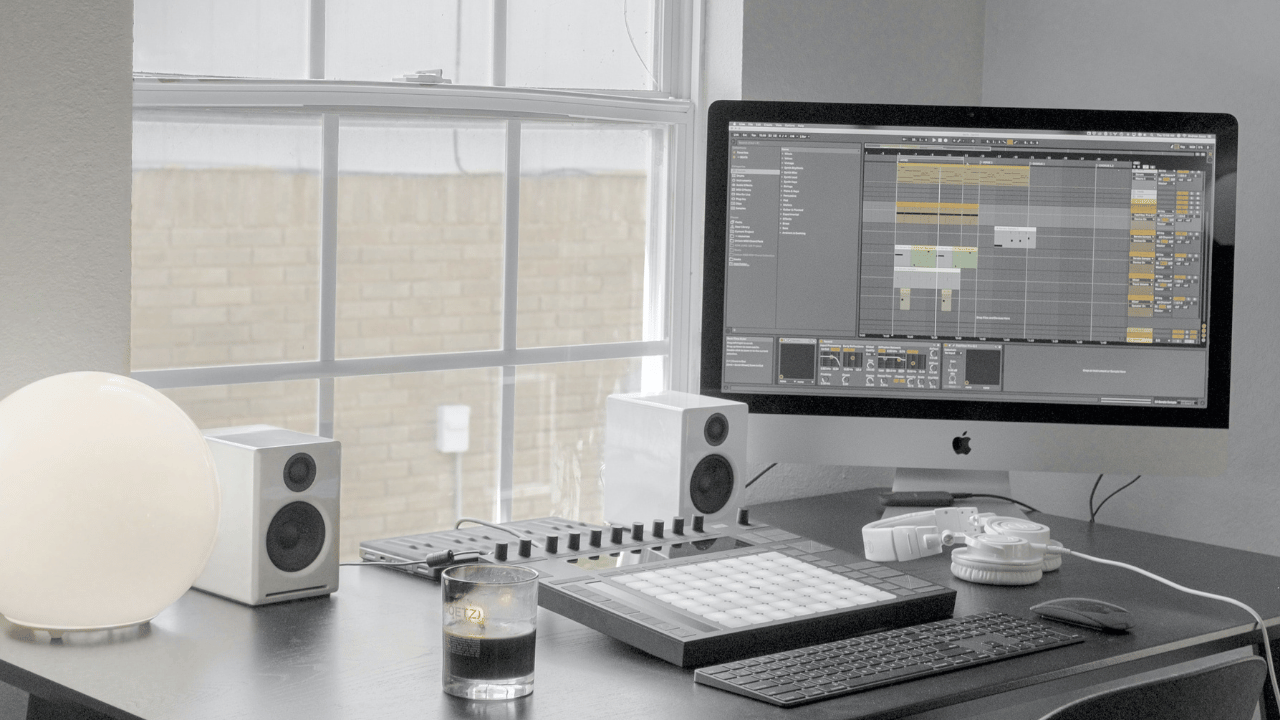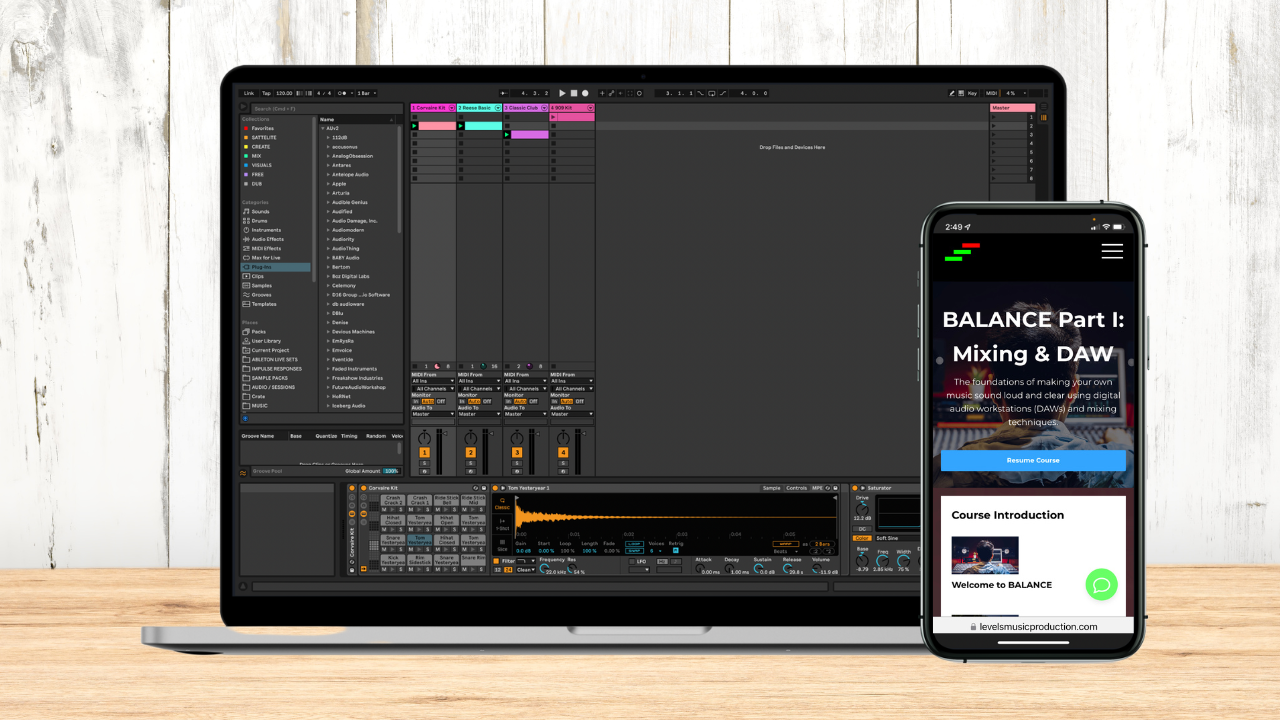Balance and Panorama: Intro to Mixing Music

Mixing music is the process of taking recorded musical elements and combining them into a cohesive and balanced final product. Mixing is a crucial step in music production and can make or break a song. In this article, we will explore the basics of mixing music and learn how to prepare for a mix with a digital audio workstation (DAW), balance and pan track levels, apply effects processing, automate the mix, and finally export the audio and back up the files.

Download my free guide: The 4 Main Elements in Any Mix
How to prepare for a mix with a DAW
Before you start mixing, import all your recorded tracks into a DAW and arrange them in the timeline. Next, you should label each track and color-code them for easy identification.
It is also important to take care of any editing and organization before mixing. This includes trimming, cutting, and comping individual takes to create the best possible performance. Additionally, you should remove any unwanted noise or hum from the tracks.
Balancing & panning track levels
The goal of this step is to bring each track to a similar volume so that nothing is overpowering or too quiet. Start by setting the volume levels for the main elements of the mix, such as the vocals, kick, snare, and bass. Then, adjust the levels of the other tracks to complement these elements.
Next, you can use panning to position each track in the stereo field. This gives each track its own space in the mix and can help to create a more interesting and dynamic sound. For example, you might pan the lead vocal to the center, the backing vocals to the left and right, and the kick and snare drum to the center.

Read: How to Start a Home Studio on a Small Budget from $200 to $1500
Effects processing
Effects processing is an important step in the mixing process as it helps to shape the sound of each track and bring it in line with the overall mix. There are four main types of effects processing: equalization (EQ), compression, delay, and reverb.
EQ is used to adjust the frequency balance of each track. You can use EQ to boost or cut certain frequencies to bring out the desired sound. For example, you might use EQ to bring out the low-end of the bass guitar or reduce the harshness of the snare drum.
Compression is used to control the dynamic range of each track. It reduces the volume difference between the loudest and quietest parts of a track, making it easier to balance the levels in the mix.
Delay and reverb are used to create space and depth in the mix. Delay adds a repeated echo to a track, while reverb simulates the natural decay of sound in a physical space. Both effects can help to create a sense of space and depth in the mix, making the individual tracks sound more cohesive.
Automation
Automation allows you to make precise adjustments to the levels and effects of your tracks over time. This can be useful for creating smooth volume changes, gradually bringing in effects, or highlighting specific parts of a track. Automation can be written in real-time or drawn in using the automation lanes in your DAW.
Once you're satisfied with your static mix, you can engage the automation on any tracks whose levels of other parameters you wish to adjust the level of over the duration of the song. Once the automation is engaged you can write in fader and knob moves and have them automatically play back.

Download my free guide: 9 Characteristics of a Sound Wave
Exporting Audio and backing up files
When you are happy with the mix, define the beginning and end point and export to a WAV, AIFF, or MP3 file depending on the destination. Back up the mix session and the exported mix to at least 2 external hard drives for your backup procedure.
In conclusion, always be prepared and have a plan before starting a mix, take time to learn and practice each step, and approach mixing with a beginner’s mind. With an open mind your creativity will find new approaches to making each song come to life. Ultimately the general goal it to achieve a mix whose instrument tracks are loud and clear.
I'm Futch, a music production coach who offers free content and a free Ableton Live online course and a 27-class Live Online Intro to Music Production course, with live online group classes and a community of users. You can find out more and sign up for discounted early access here.
Futch - Music Production Coach and Ableton Certified Trainer
Learn Music Production with my 27-class live online classes and on-demand video training:
Music Production Fundamentals • Writing Exciting Songs • Designing Your Artistic Vision
Make You-Type Beats





